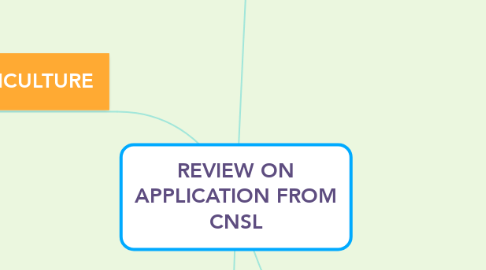
1. AGRICULTURE
1.1. Experimental
1.1.1. Method
1.1.1.1. Test
1.1.1.1.1. DDPH Test and ABTS Test.[12]
1.1.1.1.2. TLC Test [12]
1.1.1.1.3. Larvicidal activity against Ae.aegypti
1.1.1.1.4. Assessment of insect pest number[13]
1.1.1.1.5. Fungal activity [21]
1.1.1.2. Treatment in plant
1.1.1.2.1. Treatment of rice leaves[14]
1.1.2. Result
1.1.2.1. From CNSL
1.1.2.1.1. Effective as Cymbush and showing a comparatively higher protective ability. [13]
1.1.2.1.2. Decrease biomass weight of Trichoderma sp. and Gliocladium sp. [16]
1.1.2.1.3. Inhibit the development of symptoms of black pod rot disease [17]
1.1.2.1.4. Affected its toxicity against maize weevil.
1.1.2.1.5. Inhibition of the mycelial growth of C.gloeosporioides and L. theobromae [21]
1.1.2.2. From Anacardic acid
1.1.2.2.1. Prevent M.oryzae from infecting the plant without affecting the leaf.[14]
1.1.2.2.2. Inhibition of conidial germination and mycelial growth in this ascomycetous fungus.[14]
1.1.2.3. From Cardol
1.1.2.3.1. Their derivative
1.1.2.3.2. The strongest larvicidal and pupicidal effects [20]
1.1.2.4. From Cardanol
1.1.2.4.1. For DPPH and ABTS Test ,showed as the most active. [12]
1.2. Utilization
1.2.1. Essential oil [15]
1.2.1.1. Dilutions for essential oil from plant mix with CNSL
1.2.1.1.1. Effective against engorged females
1.2.1.1.2. Effective against larvae
1.2.2. Botanical pesticides [16]
1.2.3. CNSL nano emulsions has the potential to increase its toxicity against maize weevil.[19]
2. Other partial application
2.1. Bio product from wheat gluten [26]
2.1.1. Strong and high modulus
2.1.2. High flexible (CNSL Film)
2.2. Biodegradable planters[22]
3. FOOD
3.1. Experimental
3.1.1. Method
3.1.1.1. From feeding animal diet
3.1.1.1.1. Feeding animal diet containing CNSL. [1]
3.1.1.1.2. For treatment. [2]
3.1.1.1.3. Evaluate important biological variables.[1]
3.1.1.1.4. Assess the rumen fermentation pattern with methane gas.[3]
3.1.2. Result
3.1.2.1. From “Anacardic acid”
3.1.2.1.1. Reduce the destruction of DNA in vivo.[2]
3.1.2.1.2. Reduction in blood cholesterol level and increase enzyme activity (CAT activity) in animals.[1]
3.1.2.1.3. Reduction of TBARS (Thio barbituric acid reactive substances).[2]
3.1.2.1.4. To inhibit many enzymes xanthine oxidase, this enzyme accelerates the production of uric acid from xanthine and hypoxanthine. [1]
3.1.2.1.5. Reduce stress oxidation.[1]
3.1.2.2. From “CNSL”
3.1.2.2.1. Provided higher yellow ness in the yolks.[2]
3.1.2.2.2. Prevent the damage of lipid oxidative in the fresh yolk.[2]
3.1.2.2.3. Reduce methane and acetate production.[3]
3.1.2.2.4. Inhibition of methanogenesis.[3]
3.1.2.2.5. From PCR analysis : showed “Protozoa” were decreased in rumen.[25]
3.2. Utilization
3.2.1. Used in food preservation. [2]
3.2.2. Used for animal diets.[1],[3],[25]
4. MEDICINE
4.1. Method
4.1.1. Synthesis
4.1.1.1. Derivatives
4.1.1.1.1. CNSL Derivatives
4.1.1.1.2. Anacardic acid Derivatives
4.1.1.1.3. Cardanol Derivatives
4.1.1.2. Silver and Gold Nanoparticles [34]
4.1.1.2.1. Antibacterial assay
4.1.2. Purified.[10]
4.1.2.1. Antibacterial assessment
4.1.3. From natural
4.1.3.1. Extracted CNSL .[4]
4.1.3.1.1. Isolation of “Anacardic acid”.[5]
4.1.3.2. Obtained from the infected animal.[11]
4.1.3.2.1. Sheep
4.1.3.2.2. BALB/c mice .
4.1.4. Compare with each research.[11]
4.2. Result
4.2.1. From derivatives
4.2.1.1. CNSL Derivatives
4.2.1.1.1. LDT11.[8]
4.2.1.1.2. Derivatives of CNSL at 8,9.
4.2.1.2. Cardanaol derivatives
4.2.1.2.1. LDT161
4.2.1.2.2. 3-Vinylphenol .[35]
4.2.1.2.3. Derivatives of CNSL at 20,22.
4.2.1.3. Anacardic acid derivatives
4.2.1.3.1. Sulfonamide
4.2.1.3.2. Urea and Thiourea
4.2.1.3.3. Benzamide
4.2.1.3.4. Isonicotinoylhdrazones
4.2.2. From purified CNSL.[10]
4.2.2.1. inhibited the growth of HeLa cell
4.2.2.2. inhibited the proliferation of HeLa cells , which causes cervical cancer.
4.2.3. From animal experimental
4.2.3.1. Animals that received of anacardic acids showed decreased levels of neutrophils and tumor necrosis factor in the lungs and BALF.[4]
4.2.4. From extracted CNSL.[4]
4.2.4.1. Anacardic acid
4.2.4.1.1. Inhibiting the generation of ROS.
4.2.4.1.2. Prevent the decrease in CAT activities,GR,GPx and GST
4.2.4.1.3. Antioxidant and anti-inflammatory .
4.2.4.1.4. Reduction of MDA (malondialdehyde).
4.2.5. From compare with substance,which good result from each research.[11]
4.2.5.1. From “Anacardic acid”
4.2.5.1.1. Anti-hydrated agent
4.2.5.1.2. More efficacious than “ABZ” and “DHA” in vitro.
4.2.5.1.3. Inhibition of VEGF-induced angiogenesis.
4.2.5.1.4. More efficacious than “ABZ” and “DHA” in vitro.
4.2.6. Nanoparticles can against fish pathogens. [34]
